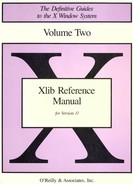H
Keysyms
This appendix provides a list of keysyms and a brief description of each keysym. Keysyms, as you may remember, are the portable representation of the symbols on the caps of keys.
The normal way to process a keyboard event is to use XLookupKeysym to determine the keysym or, if the application allows remapping of keys to strings, it may use XLookupString to get the ASCII string mapped to the key or keys pressed. This allows the application to treat keys in a simple and portable manner, and places the responsibility of tailoring the mapping between keys and keysyms on the server vendor.*
Many keysyms do not have obvious counterparts on the keyboard, but may be generated with certain key combinations. You will need a table for each particular model of hardware you intend the program to work on, to tell you what key combination results in each keysym that is not present on the caps of the keyboard. For real portability, you will want to use only the keysyms that are supported on all vendors equipment you intend the program to be displayed on.
The keysyms are defined in two standard include files: <X11/keysym.h> and <X11/keysymdef.h>. There are several families of keysyms defined in <X11/keysymdef.h>; LATIN1, LATIN2, LATIN3, LATIN4, KATAKANA, ARABIC, CYRILLIC, GREEK, TECHNICAL, SPECIAL, PUBLISHING, APL, HEBREW, and MISCELLANY. The <X11/keysym.h> file specifies which families are enabled. Only the LATIN1, LATIN2, LATIN3, LATIN4, GREEK, and MISCELLANY families are enabled in the standard <X11/keysym.h> file, probably because some compilers have an upper limit on the number of defined symbols that are allowed.
The developers of X at MIT say that to the best of their knowledge the Latin, Kana, Arabic, Cyrillic, Greek, Technical, APL, and Hebrew keysym sets are from the appropriate ISO (International Standards Organization) and/or ECMA international standards. There are no Technical, Special nor Publishing international standards, so these sets are based on Digital Equipment Corporation standards.
Keysyms are four byte long values. In the standard keysyms, the least significant 8 bits indicate a particular character within a set. and the next 8 bits indicate a particular keysym set. The order of the sets is important since not all the sets are complete. Each character set contains gaps where codes have been removed that were duplicates with codes in previous (that is, with lesser keysym set) character sets.
The 94 and 96 character code sets have been moved to occupy the right hand quadrant (decimal 129 - 256), so the ASCII subset has a unique encoding across the least significant byte which corresponds to the ASCII character code. However, this cannot be guaranteed in the keysym sets of future releases and does not apply to all of the MISCELLANY set.
As far as possible, keysym codes are the same as the character code. In the LATIN1 to LATIN4 sets, all duplicate glyphs occupy the same position. However, duplicates between GREEK and TECHNICAL do not occupy the same code position. Thus, applications wishing to use the TECHNICAL character set must transform the keysym using an array.
The MISCELLANY set is a miscellaneous collection of commonly occurring keys on keyboards. Within this set, the keypad symbols are generally duplicates of symbols found on keys on the alphanumeric part of the keyboard but are distinguished here because they often have distinguishable keycodes associated with them.
There is a difference between European and US usage of the names Pilcrow, Paragraph, and Section, as shown in Table H-1.
Table H-1. European vs. US usage of Pilcrow, Paragraph, and Section symbol names

X has adopted the names used by both the ISO and ECMA standards. Thus, XK_paragraph is what Europeans call the pilcrow sign, and XK_section is what they would call the paragraph sign. This favors the US usage.
Keysyms and Description
Tables H-2 through H-7 list the six commonly available sets of keysyms (MISCELLANY, LATIN1 through LATIN4, and GREEK) and describe each keysym briefly. When necessary and possible, these tables show a representative character or characters that might appear on the cap of the key or on the screen when the key or keys corresponding to the keysym were typed.
| Keysym | Description |
| XK_Backspace | Backspace, Back Space, Back Char |
| XK_Tab | Tab |
| XK_Linefeed | Linefeed, LF |
| XK_Clear | Clear |
| XK_Return | Return, Enter |
| XK_Pause | Pause, Hold, Scroll Lock |
| XK_Escape | Escape |
| XK_Delete | Delete, Rubout |
| XK_Multi_key | Multi-key character preface |
| XK_Kanji | Kanji, Kanji convert |
| XK_Home | Home |
| XK_Left | Left, move left, left arrow |
| XK_Up | Up, move up, up arrow |
| XK_Right | Right, move right, right arrow |
| XK_Down | Down, move down, down arrow |
| XK_Prior | Prior, previous |
| XK_Next | Next |
| XK_End | End, EOL |
| XK_Begin | Begin, BOL |
| XK_Select | Select, mark |
| XK_Print | |
| XK_Execute | Execute, run, do |
| XK_Insert | Insert, insert here |
| XK_Undo | Undo, oops |
| XK_Redo | Redo, again |
| XK_Menu | Menu |
| XK_Find | Find, search |
| XK_Cancel | Cancel, stop, abort, exit |
| XK_Help | Help, question mark |
| XK_Break | Break |
| XK_Mode_switch | Mode switch, script switch, character set switch |
| XK_script_switch | Alias for mode switch, script switch, character set switch |
| XK_Num_Lock | Num Lock |
| XK_KP_Space | Keypad Space |
| XK_KP_Tab | Keypad Tab |
| XK_KP_Enter | Keypad Enter |
| XK_KP_F1 | Keypad F1, PF1, a |
| XK_KP_F2 | Keypad F2, PF2, b |
| XK_KP_F3 | Keypad F3, PF3, c |
| XK_KP_F4 | Keypad F4, PF4, d |
| XK_KP_Equal | Keypad equals sign |
| XK_KP_Multiply | Keypad multiplication sign, asterisk |
| XK_KP_Add | Keypad plus sign |
| XK_KP_Separator | Keypad separator, comma |
| XK_KP_Subtract | Keypad minus sign, hyphen |
| XK_KP_Decimal | Keypad decimal point, full stop |
| XK_KP_Divide | Keypad division sign, solidus |
| XK_KP_0 | Keypad digit zero |
| XK_KP_1 | Keypad digit one |
| XK_KP_2 | Keypad digit two |
| XK_KP_3 | Keypad digit three |
| XK_KP_4 | Keypad digit four |
| XK_KP_5 | Keypad digit five |
| XK_KP_6 | Keypad digit six |
| XK_KP_7 | Keypad digit seven |
| XK_KP_8 | Keypad digit eight |
| XK_KP_9 | Keypad digit nine |
| XK_F1 | F1 function key |
| XK_F2 | F2 function key |
| XK_F3 | F3 function key |
| XK_F4 | F4 function key |
| XK_F5 | F5 function key |
| XK_F6 | F6 function key |
| XK_F7 | F7 function key |
| XK_F8 | F8 function key |
| XK_F9 | F9 function key |
| XK_F10 | F10 function key |
| XK_F11 | F11 function key |
| XK_L1 | L1 function key |
| XK_F12 | F12 function key |
| XK_L2 | L2 function key |
| XK_F13 | F13 function key |
| XK_L3 | L3 function key |
| XK_F14 | F14 function key |
| XK_L4 | L4 function key |
| XK_F15 | F15 function key |
| XK_L5 | L5 function key |
| XK_F16 | F16 function key |
| XK_L6 | L6 function key |
| XK_F17 | F17 function key |
| XK_L7 | L7 function key |
| XK_F18 | F18 function key |
| XK_L8 | L8 function key |
| XK_F19 | F19 function key |
| XK_L9 | L9 function key |
| XK_F20 | F20 function key |
| XK_L10 | L10 function key |
| XK_F21 | F21 function key |
| XK_R1 | R1 function key |
| XK_F22 | F22 function key |
| XK_R2 | R2 function key |
| XK_F23 | F23 function key |
| XK_R3 | R3 function key |
| XK_F24 | F24 function key |
| XK_R4 | R4 function key |
| XK_F25 | F25 function key |
| XK_R5 | R5 function key |
| XK_F26 | F26 function key |
| XK_R6 | R6 function key |
| XK_F27 | F27 function key |
| XK_R7 | R7 function key |
| XK_F28 | F28 function key |
| XK_R8 | R8 function key |
| XK_F29 | F29 function key |
| XK_R9 | R9 function key |
| XK_F30 | F30 function key |
| XK_R10 | R10 function key |
| XK_F31 | F31 function key |
| XK_R11 | R11 function key |
| XK_F32 | F32 function key |
| XK_R12 | R12 function key |
| XK_R13 | F33 function key |
| XK_F33 | R13 function key |
| XK_F34 | F34 function key |
| XK_R14 | R14 function key |
| XK_F35 | F35 function key |
| XK_R15 | R15 function key |
| XK_Shift_L | Left Shift |
| XK_Shift_R | Right Shift |
| XK_Control_L | Left Control |
| XK_Control_R | Right Control |
| XK_Caps_Lock | Caps Lock |
| XK_Shift_Lock | Shift Lock |
| XK_Meta_L | Left Meta |
| XK_Meta_R | Right Meta |
| XK_Alt_L | Left Alt |
| XK_Alt_R | Right Alt |
| XK_Super_L | Left Super |
| XK_Super_R | Right Super |
| XK_Hyper_L | Left Hyper |
| XK_Hyper_R | Right Hyper |
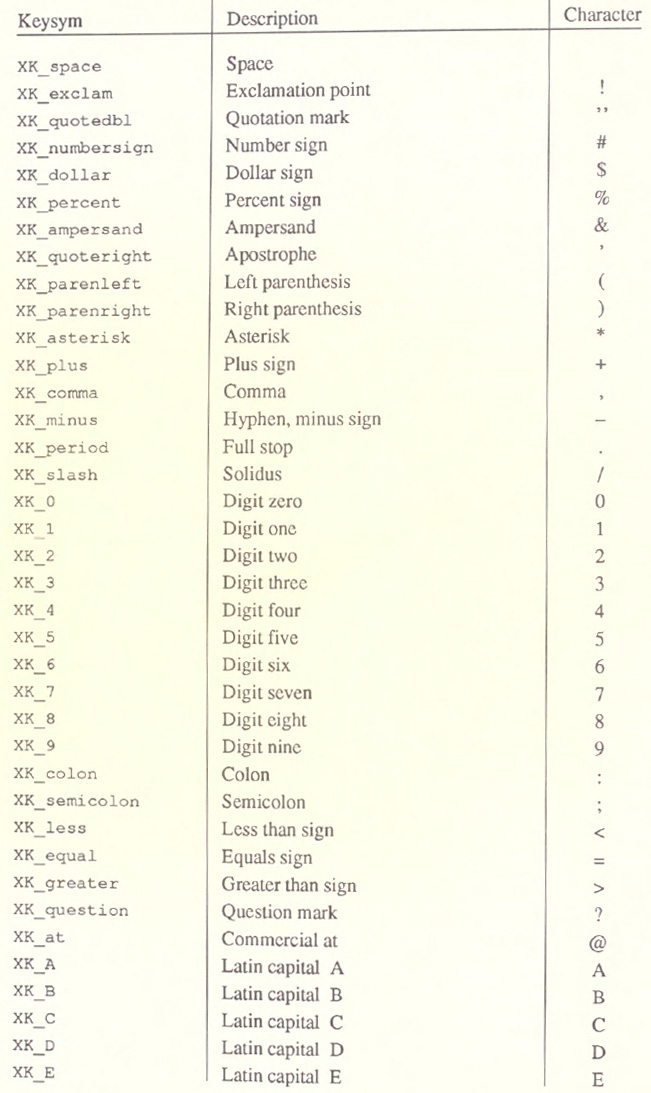
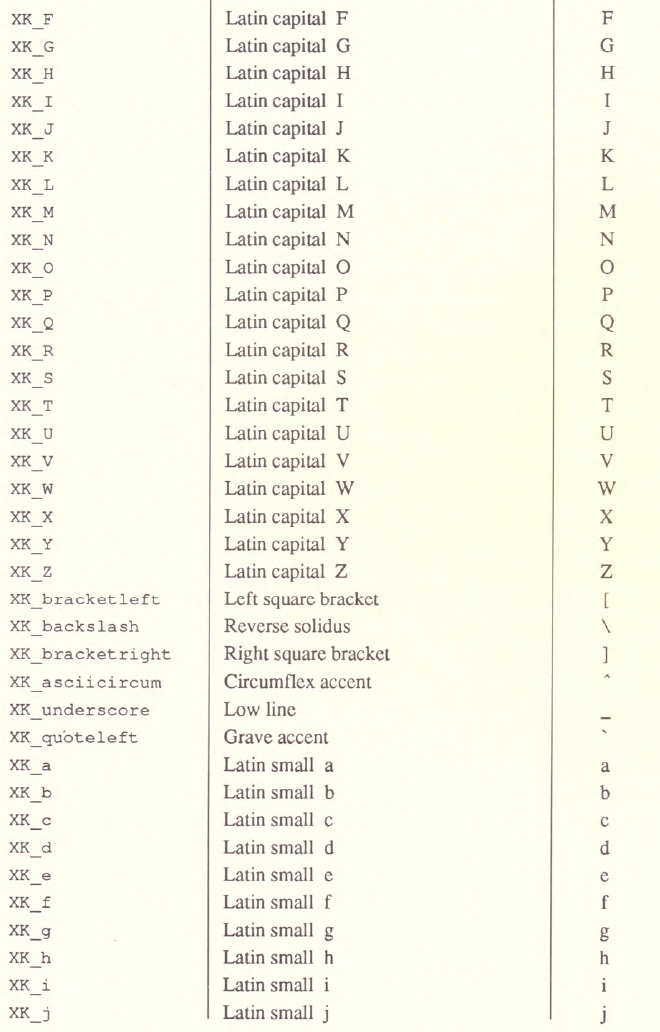
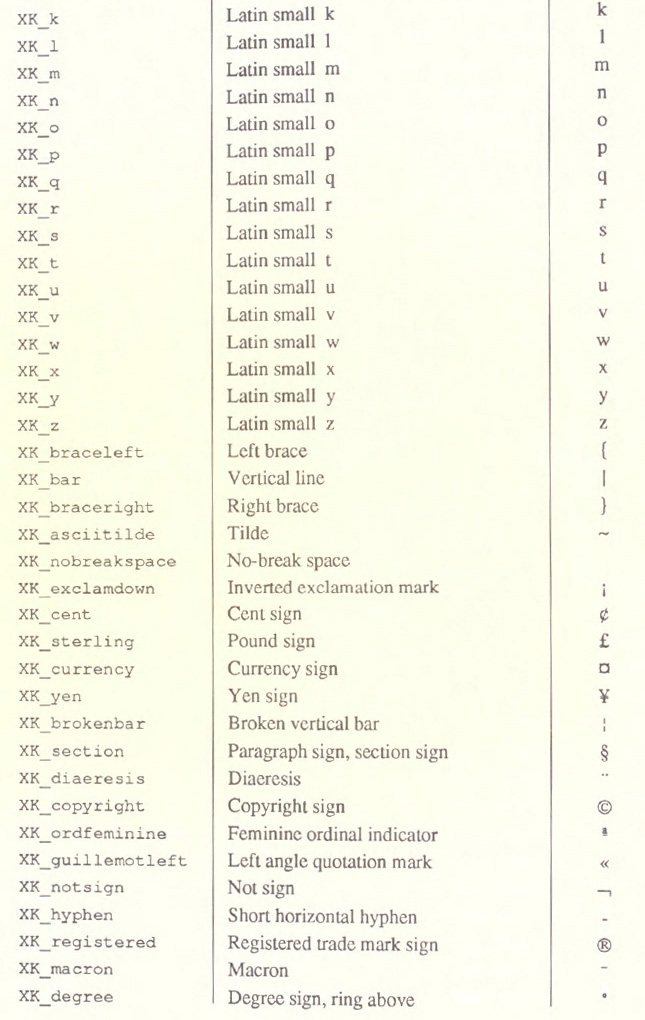
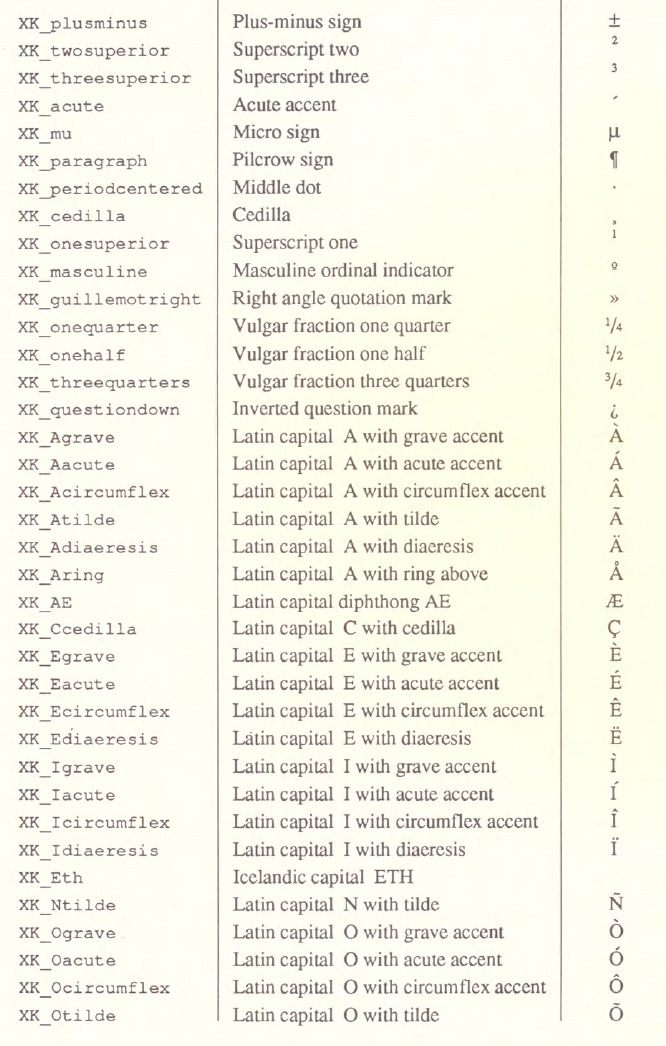
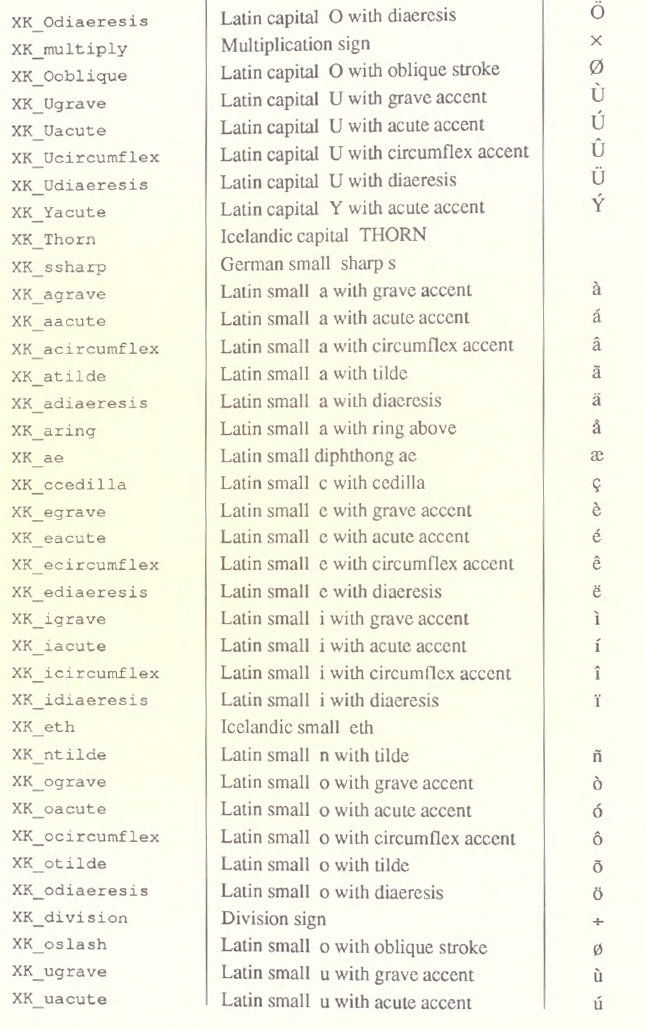

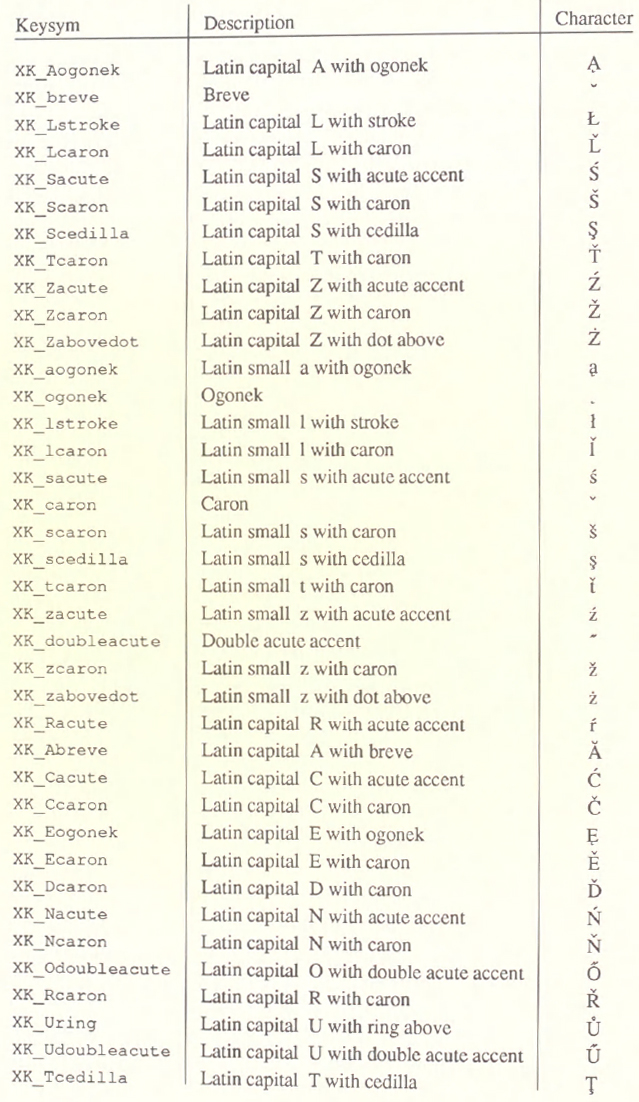
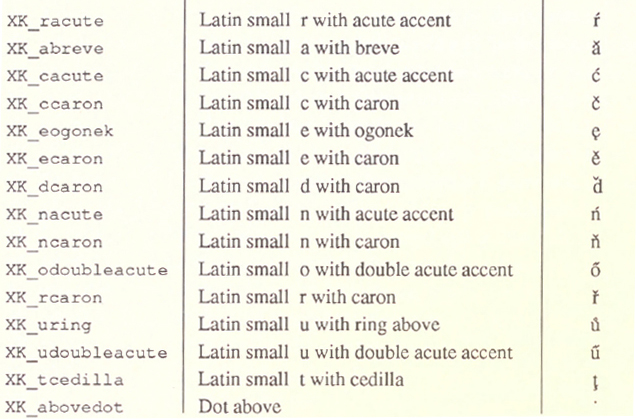
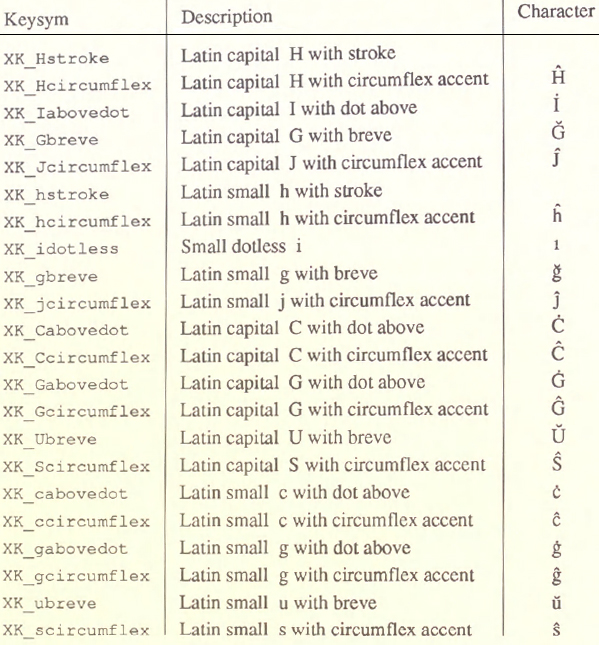
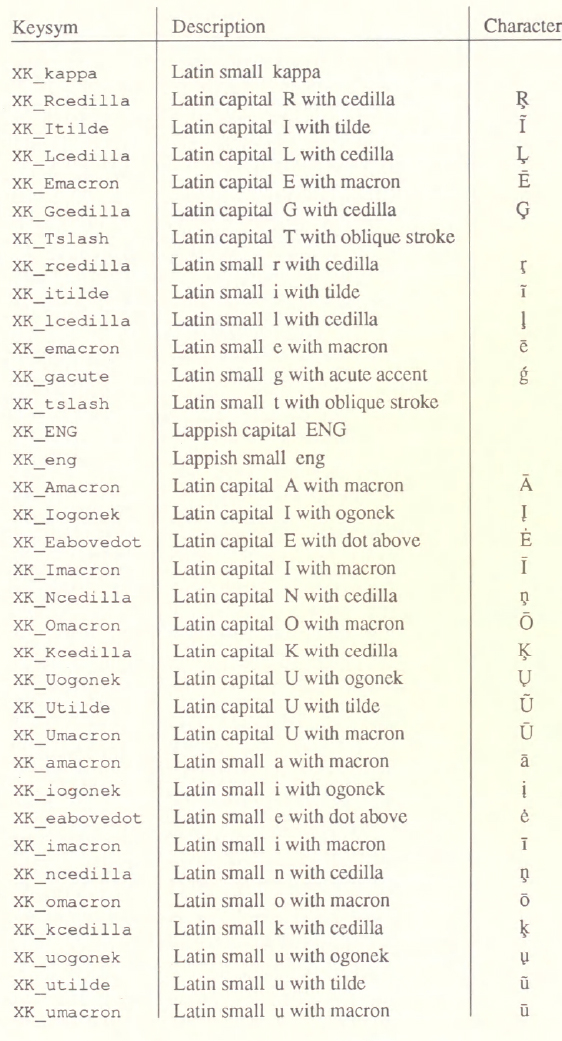
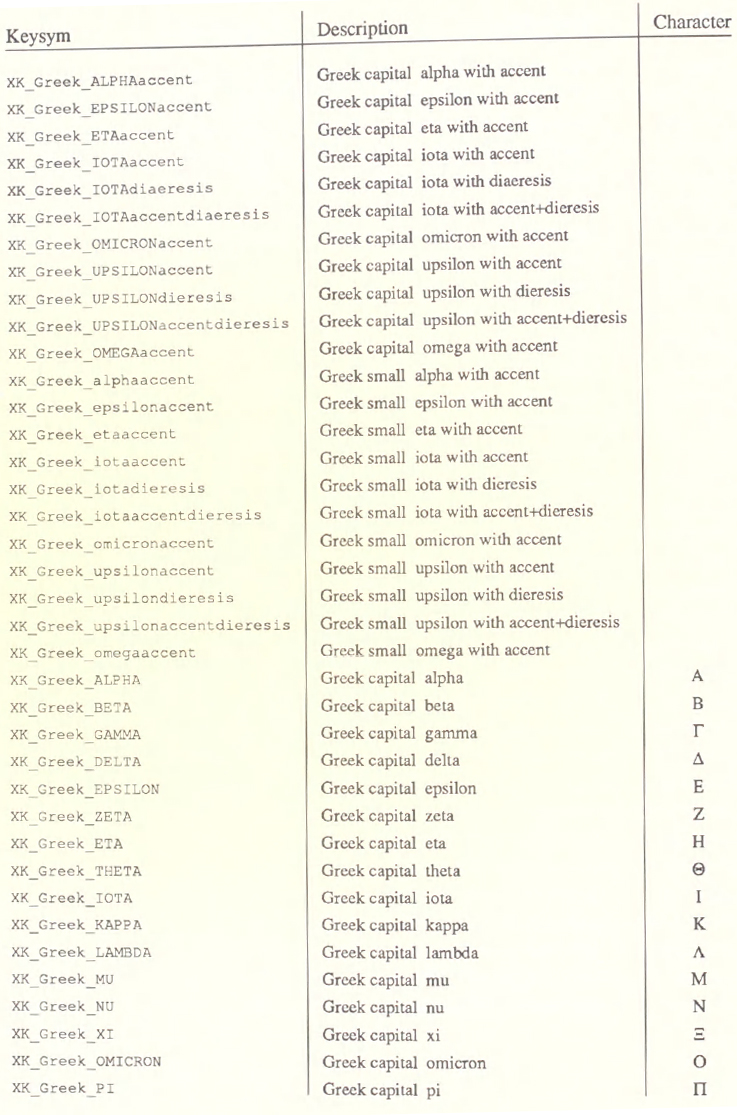
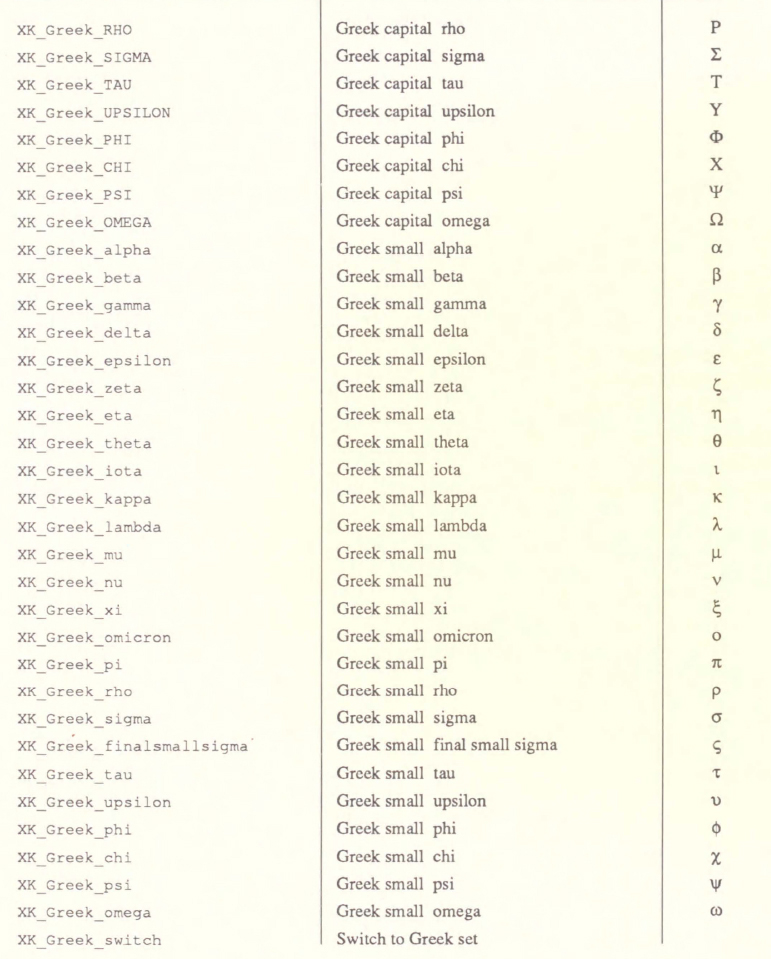
* While keycode information is not necessary for normal application programming, it may be necessary for writing certain programs that change the keycode to keysym mapping. You will need to obtain a list of keycodes and their normal mappings from the system manufacturer. Any program that uses this mapping is not fully portable.
